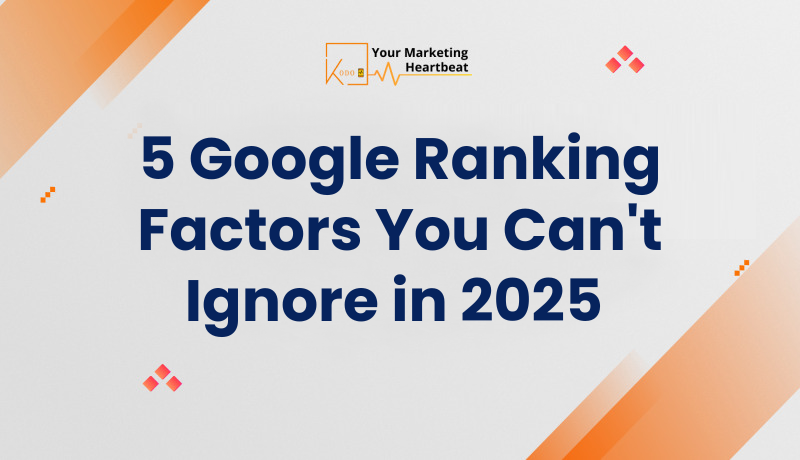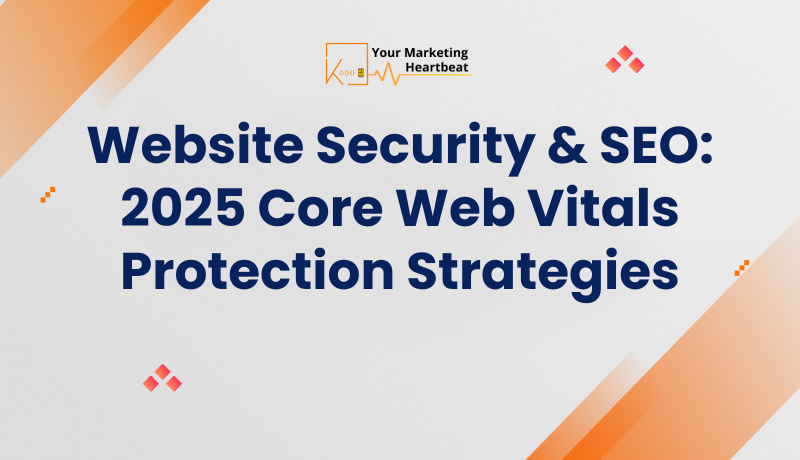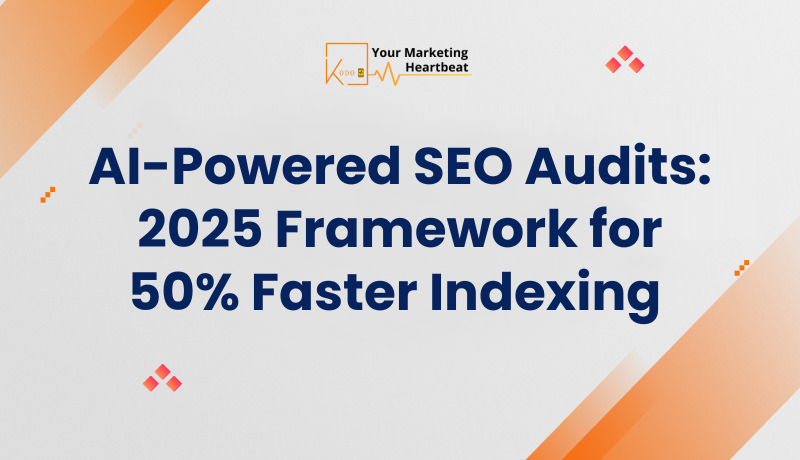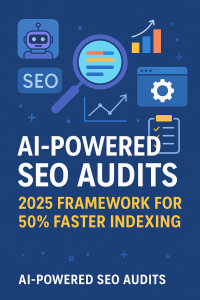
5 Google Ranking Factors You MUST Optimize for #1 Ranking in 2025
The digital landscape is ever-evolving, and staying ahead of the curve is crucial for businesses aiming to maintain a strong online presence. As we approach 2025, Google’s algorithm continues to refine its criteria for ranking websites. In this comprehensive guide, we’ll explore the five most critical Google ranking factors that you simply can’t afford to overlook. By understanding and implementing these key elements, you’ll be well-positioned to boost your website’s visibility and drive organic traffic in the coming years.
The Evolving Nature of SEO
Search engine optimization has come a long way since its inception. What worked wonders for your website’s rankings in previous years may no longer yield the same results in 2025. While the fundamental principles of SEO remain intact, significant changes have emerged that demand our attention.
Google’s algorithm updates have become more sophisticated, focusing on delivering the most relevant and high-quality content to users. As digital marketers and business owners, it’s our responsibility to adapt to these changes and align our strategies accordingly. Failing to do so could result in a decline in search visibility and missed opportunities to connect with potential customers.
Why These Ranking Factors Matter
You might be wondering why we’re emphasizing these particular ranking factors. The truth is, with the vast array of SEO techniques available, it’s easy to get overwhelmed and lose focus on what truly matters. By concentrating on these five critical factors, you’ll be addressing the core elements that Google considers when evaluating and ranking websites.
These ranking factors have been carefully selected based on their universal applicability across various industries and business types. They represent the foundation of a solid SEO strategy that can withstand algorithm updates and continue to drive results in the long term.
Now, let’s dive into the five Google ranking factors you can’t ignore in 2025.
Ranking Factor #1: User Experience and Core Web Vitals
In 2025, user experience (UX) has become more crucial than ever in determining a website’s search engine rankings. Google has placed increased emphasis on how users interact with and perceive websites, making it essential for site owners to prioritize UX in their SEO strategies.
The Importance of Core Web Vitals
Core Web Vitals are a set of specific factors that Google considers important in a webpage’s overall user experience. These metrics focus on three aspects of user experience: loading, interactivity, and visual stability.
- Largest Contentful Paint (LCP): This measures loading performance. To provide a good user experience, LCP should occur within 2.5 seconds of when the page first starts loading.
- First Input Delay (FID): This measures interactivity. Pages should have an FID of less than 100 milliseconds.
- Cumulative Layout Shift (CLS): This measures visual stability. Pages should maintain a CLS of less than 0.1.
Optimizing for Core Web Vitals
To improve your website’s Core Web Vitals, consider the following strategies:
- Optimize images and videos to reduce file sizes without compromising quality
- Minimize the use of large JavaScript libraries and unnecessary code
- Implement lazy loading for images and videos
- Use a content delivery network (CDN) to serve assets from servers closer to the user’s location
- Ensure that your hosting provider offers fast server response times
Mobile-First Indexing
With mobile devices accounting for over 50% of global web traffic, Google has fully embraced mobile-first indexing. This means that the mobile version of your website is considered the primary version for indexing and ranking.
To ensure your website is mobile-friendly:
- Use responsive design that adapts to different screen sizes
- Ensure that all content and features are accessible on mobile devices
- Optimize page load times for mobile users
- Use legible fonts and appropriately sized buttons for touch screens
Page Experience Signals
In addition to Core Web Vitals, Google considers other page experience signals:
- Safe browsing (no malware or deceptive content)
- No intrusive interstitials
By focusing on these aspects of user experience, you’ll not only improve your search rankings but also create a more enjoyable and efficient experience for your visitors.
Ranking Factor #2: High-Quality, Relevant Content
Content remains king in the world of SEO, and its importance has only grown in 2025. Google’s algorithms have become increasingly adept at understanding the context and quality of content, making it crucial to produce valuable, relevant, and comprehensive information for your audience.
Content Length and Depth
While there’s no magic number for the ideal content length, studies consistently show that longer, more in-depth content tends to perform better in search rankings. In 2025, the focus is on creating comprehensive resources that thoroughly cover a topic rather than short, superficial articles.
Key considerations for content length and depth:
- Aim for a minimum of 1,500 words for most articles, but prioritize quality over quantity
- Cover all aspects of a topic, anticipating and answering potential user questions
- Use headings and subheadings to organize information logically
- Include relevant examples, case studies, or data to support your points
E-A-T (Expertise, Authoritativeness, Trustworthiness)
Google places a high value on content that demonstrates E-A-T. This is particularly important for YMYL (Your Money or Your Life) topics that can impact a person’s health, financial stability, or safety.
To improve your content’s E-A-T:
- Showcase author expertise through detailed author bios and credentials
- Link to authoritative sources to support your claims
- Regularly update your content to ensure it remains accurate and relevant
- Encourage and respond to user comments to build trust and engagement
Google favors websites that consistently publish new content and update existing pages. This signals to the search engine that your site is active and committed to providing current information.
Strategies for maintaining content freshness:
- Develop a content calendar to ensure regular publication of new articles
- Conduct periodic audits of existing content and update as necessary
- Add new information or examples to older articles to keep them relevant
- Use schema markup to indicate when content was last updated
User Intent Alignment
Understanding and aligning with user intent is crucial for content success in 2025. Google’s algorithms have become highly sophisticated in determining whether content truly satisfies the user’s search query.
To align your content with user intent:
- Research and understand the different types of search intent (informational, navigational, transactional, commercial investigation)
- Analyze the search results for your target keywords to understand what type of content Google considers most relevant
- Structure your content to directly address the user’s primary question or need
- Provide additional value beyond what the user might initially expect
By focusing on creating high-quality, relevant content that aligns with user intent and demonstrates E-A-T, you’ll be well-positioned to rank higher in Google’s search results and provide genuine value to your audience.
Ranking Factor #3: Backlink Quality and Diversity
In 2025, backlinks continue to play a crucial role in Google’s ranking algorithm. However, the focus has shifted from quantity to quality and diversity. A strong backlink profile signals to Google that your website is a trusted and authoritative source of information.
Not all backlinks are created equal. Google places a higher value on links from reputable, authoritative websites within your industry or niche. These high-quality backlinks are seen as votes of confidence in your content and expertise.
Characteristics of high-quality backlinks:
- Come from websites with high domain authority
- Are from sites relevant to your industry or topic
- Appear in the main content of a page, rather than in footers or sidebars
- Use natural, relevant anchor text
- Are surrounded by contextually relevant content
Diversity in Your Backlink Profile
While acquiring high-quality backlinks is essential, diversity in your backlink profile is equally important. A natural backlink profile will include links from various types of websites and sources.
Types of backlinks to pursue:
- Editorial links from industry publications
- Guest post links from reputable blogs
- Links from industry directories
- Social media mentions and links
- Forum and community discussion links
Strategies for Building Quality Backlinks
Building a strong backlink profile requires a strategic approach. Here are some effective tactics for acquiring high-quality, diverse backlinks:
- Create linkable assets: Develop comprehensive guides, original research, infographics, or tools that other websites will want to link to.
- Engage in digital PR: Build relationships with journalists and bloggers in your industry to earn media mentions and links.
- Guest blogging: Contribute high-quality articles to reputable websites in your niche, including a link back to your site where relevant.
- Broken link building: Identify broken links on other websites and offer your content as a replacement.
- Participate in industry forums and discussions: Share your expertise and include links to your content when it adds value to the conversation.
- Leverage social media: Share your content on social platforms to increase visibility and encourage natural link building.
Monitoring and Managing Your Backlink Profile
Regularly monitoring your backlink profile is crucial to maintain its health and identify opportunities for improvement.
Key aspects of backlink management:
- Use tools like Ahrefs, SEMrush, or Moz to track your backlinks
- Regularly audit your backlink profile to identify and disavow toxic or spammy links
- Analyze your competitors’ backlink profiles to identify new link-building opportunities
- Monitor for unlinked brand mentions and reach out to request links where appropriate
Remember, while backlinks remain a critical ranking factor, it’s essential to focus on earning them naturally through high-quality content and genuine relationship-building. Avoid any tactics that could be perceived as manipulative or violate Google’s guidelines, as these could result in penalties.
Ranking Factor #4: Technical SEO and Site Structure
In 2025, technical SEO remains a fundamental aspect of achieving and maintaining high search engine rankings. A well-structured, technically sound website provides a solid foundation for all other SEO efforts and ensures that search engines can effectively crawl, index, and understand your content.
Site Speed and Performance
Website speed has become increasingly important as a ranking factor, particularly with the emphasis on mobile-first indexing and user experience.
Key considerations for site speed optimization:
- Optimize images and videos (compress, use appropriate formats, implement lazy loading)
- Minify CSS, JavaScript, and HTML
- Use a content delivery network (CDN)
- Optimize server response time
- Implement AMP (Accelerated Mobile Pages) for faster mobile loading
Mobile Optimization
With mobile-first indexing fully implemented, ensuring your website is fully optimized for mobile devices is crucial.
Mobile optimization strategies:
- Use responsive design that adapts to different screen sizes
- Ensure all content and features are accessible on mobile devices
- Optimize touch targets (buttons, links) for mobile users
- Avoid using Flash or other technologies not supported on mobile devices
- Test your site’s mobile-friendliness using Google’s Mobile-Friendly Test tool
Site Architecture and Internal Linking
A logical site structure and effective internal linking strategy help both users and search engines navigate your website and understand the relationship between different pages.
Best practices for site architecture and internal linking:
- Implement a clear, hierarchical site structure
- Use descriptive, keyword-rich URLs
- Create a comprehensive internal linking strategy that connects related content
- Implement breadcrumbs to improve navigation and provide additional context to search engines
- Use XML sitemaps to ensure all important pages are discoverable
Schema Markup and Structured Data
Implementing schema markup helps search engines better understand the content and context of your web pages, potentially leading to rich snippets in search results.
Types of schema markup to consider:
- Organization and local business information
- Product and review schemas for e-commerce sites
- Article and FAQ schemas for informational content
- Event schemas for upcoming webinars or conferences
- Recipe schemas for food-related content
HTTPS Security
In 2025, having a secure website is not just a ranking factor but a necessity for user trust and data protection.
Ensure your website is secure by:
- Implementing HTTPS across your entire site
- Keeping SSL certificates up to date
- Redirecting all HTTP traffic to HTTPS
- Fixing mixed content issues (HTTP resources on HTTPS pages)
Core Web Vitals Optimization
As mentioned earlier, Core Web Vitals have become a critical aspect of technical SEO. Ensure you’re regularly monitoring and optimizing for these metrics:
- Largest Contentful Paint (LCP)
- Cumulative Layout Shift (CLS)
Use tools like Google Search Console and PageSpeed Insights to monitor and improve your Core Web Vitals scores.
By focusing on these technical SEO aspects, you’ll create a solid foundation for your website that supports your content and backlink strategies while providing an excellent user experience. Remember, technical SEO is an ongoing process, and regular audits and updates are necessary to maintain optimal performance.
Ranking Factor #5: User Engagement Metrics
In 2025, Google has become increasingly sophisticated in its ability to measure and interpret user engagement signals as indicators of content quality and relevance. While Google has not officially confirmed all the engagement metrics it uses in its ranking algorithm, several factors are believed to play a significant role in determining search rankings.
Click-Through Rate (CTR)
CTR measures the percentage of users who click on your search result after seeing it in the search engine results pages (SERPs). A higher CTR suggests that your title tags and meta descriptions are compelling and relevant to the user’s search query.
Strategies to improve CTR:
- Write compelling, keyword-rich title tags that accurately describe your content
- Craft meta descriptions that provide a clear value proposition and call-to-action
- Use schema markup to generate rich snippets, which can increase visibility in SERPs
- Optimize for featured snippets to capture more SERP real estate
Dwell Time and Time on Page
Dwell time refers to the amount of time a user spends on your page before returning to the search results. A longer dwell time suggests that users find your content valuable and engaging.
Ways to increase dwell time:
- Create in-depth, comprehensive content that thoroughly addresses the user’s query
- Use engaging multimedia elements like images, videos, and infographics
- Implement a clear, easy-to-navigate page structure
- Ensure your content is easy to read with appropriate formatting (headings, bullet points, short paragraphs)
Bounce Rate
Bounce rate measures the percentage of users who leave your site after viewing only one page. A high bounce rate can indicate that users aren’t finding what they’re looking for or that your content isn’t meeting their expectations.
Tactics to reduce bounce rate:
- Ensure your content matches the user’s search intent
- Improve page load times to prevent users from leaving due to slow loading
- Use internal linking to guide users to related content
- Implement exit-intent popups to re-engage users before they leave
Pages per Session
The number of pages a user views during a single session can indicate the depth of engagement with your site. A higher number of pages per session suggests that users find your content valuable and are exploring more of what your site has to offer.
Ways to increase pages per session:
- Implement a strong internal linking strategy
- Use related content widgets to suggest additional articles
- Create content clusters around main topics to encourage further exploration
- Ensure your site navigation is intuitive and easy to use
Social Signals
While not a direct ranking factor, social engagement (likes, shares, comments) can indirectly impact your search rankings by increasing visibility and driving traffic to your site.
Strategies to boost social signals:
- Create share-worthy content that provides unique value or insights
- Include social sharing buttons on your content
- Engage with your audience on social media platforms
- Encourage user-generated content and discussions around your brand
User Feedback and Reviews
Google may use user feedback and reviews as signals of content quality and relevance, particularly for local SEO.
Ways to leverage user feedback:
- Encourage satisfied customers to leave reviews on Google My Business and other relevant platforms
- Respond promptly and professionally to all reviews, both positive and negative
- Use customer feedback to improve your products, services, and content
- Implement structured data for reviews to enhance their visibility in search results
Mobile Usability
With mobile-first indexing, how users interact with your site on mobile devices has become increasingly important.
Mobile usability factors to consider:
- Ensure all content is easily accessible on mobile devices
- Optimize tap targets (buttons, links) for mobile users
- Avoid using interstitials that obstruct content on mobile devices
- Test your site’s mobile usability using Google’s Mobile-Friendly Test tool
By focusing on these user engagement metrics, you’ll not only improve your search rankings but also create a better overall experience for your site visitors. Remember, while these metrics are important, they should be considered in conjunction with other ranking factors for a comprehensive SEO strategy.
Conclusion: Adapting to the Future of SEO
As we’ve explored the five critical Google ranking factors for 2025, it’s clear that SEO continues to evolve towards a more user-centric, content-driven approach. By focusing on these key areas – user experience, high-quality content, backlink quality and diversity, technical SEO, and user engagement metrics – you’ll be well-positioned to improve your website’s search engine rankings and overall online presence.
Remember, SEO is not a one-time effort but an ongoing process of optimization and adaptation. Stay informed about the latest trends and algorithm updates, and be prepared to adjust your strategies accordingly. Regularly audit your website’s performance across these ranking factors and make data-driven decisions to continually improve your SEO efforts.
Ultimately, the goal is not just to rank higher in search results but to provide genuine value to your audience. By aligning your SEO strategies with user needs and expectations, you’ll create a sustainable online presence that drives organic traffic, engages your audience, and supports your business goals in the long term.
As you implement these strategies, remember that patience and persistence are key. SEO results often take time to materialize, but by consistently applying these best practices, you’ll be building a strong foundation for long-term success in the ever-changing landscape of search engine optimization.





